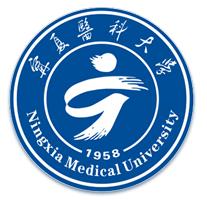
The predecessor of Ningxia Medical University was the Ningxia Medical College established in 1958. In 1962, it was renamed the Department of Medicine of Ningxia University. In 1972, Shanghai Railway Medical College moved to Yinchuan and merged with the Department of Medicine of Ningxia University to rebuild Ningxia Medical College. In 2002, Ningxia Health School and Ningxia Nursing School were merged into Ningxia Medical College. In August 2008, the school was renamed Ningxia Medical University. In 2014, Ningxia Normal University School of Medicine was merged into Ningxia Medical University. So far, the school has become the only medical higher education institution in Ningxia.
The school is a university jointly established by the Ministry of Education, the National Health Commission, and the People's Government of the Ningxia Hui Autonomous Region. There are more than 6,800 teaching staff and medical staff, including 1,042 full-time teachers. There are 113 doctoral supervisors and 887 master supervisors (including 113 doctoral supervisors). There are 10,919 full-time students (including doctors, masters, undergraduates, junior colleges, and international students). There are two campuses in Yanhu and Shuangyi, covering a total area of 1,700 mu, with 14 teaching institutions, 13 teaching and scientific research institutions, 14 non-directly affiliated hospitals, and 52 teaching practice hospitals.
The school has 4 disciplines of medicine, science, management and engineering, and 20 undergraduate majors, including 5 national first-class majors in clinical medicine, medical laboratory technology, pharmacy, preventive medicine, and nursing, and 5 national-level characteristic majors. There are 9 autonomous region-level specialty majors and 2 national-level first-class courses. There are 2 national-level teaching teams and 11 autonomous-level teaching teams. There are 2 national experimental teaching demonstration centers and 9 autonomous experimental teaching demonstration centers.
The school has 5 doctoral degree award points and 15 master degree award points. There are 8 key disciplines of traditional Chinese medicine under the State Administration of Traditional Chinese Medicine, 5 key disciplines at the autonomous region level, 4 disciplines with advantageous characteristics at the autonomous region level, and 7 first-class construction disciplines in the autonomous region. 1 national key laboratory cultivation base, 3 ministries (commissions) key laboratories, 1 collaborative innovation center jointly built by the Ministry of Education, 6 autonomous region-level key laboratories, 3 autonomous region engineering technology centers, There are 10 autonomous region-level clinical medical research centers and 13 autonomous region-level research institutes.
The school adheres to the school-running philosophy of "opening schools, connotative development, strengthening characteristics, and focusing on innovation" and the school motto of "cultivating morality and helping people, learning and refining skills", concentrating and striving for the first-class, and has now developed into a large-scale and structured school. It is a medical college with certain influence and popularity among similar colleges and universities in the country. During the "14th Five-Year Plan" period, we will always adhere to the development path of socialist education with Chinese characteristics, adhere to the new development concept, adhere to high-quality development, focus on the fundamental task of cultivating people with morality, and cultivate socialist builders with all-round development of morality, intelligence, physique, beauty and labor and successors, and strive to build a first-class, domestically well-known, internationally influential, and distinctive teaching and research university in the west.